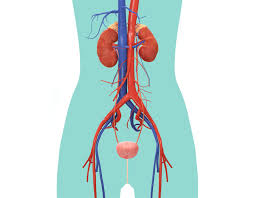Comparative studies of immunochromatographic strips and microscopy in the diagnosis of urinary schistosomiasis in selected children in Zaria, Nigeria
Keywords:
Schistosomiasis, Immunochromatographic, Microscopy, Prevalence, Schistosoma haematobiumAbstract
Schistosomiasis remains endemic in many developing countries due to poor hygiene and access to potable water sources. The study was conducted to determine the prevalence of urinary schistosomiasis in selected children. A total of 100 urine samples were collected randomly from the selected population and screened using the CCA rapid immunochromatographic test strips and microscopy for the ova of the Schistosoma haematobium. It was observed at the end that out of the 100 samples examined, the prevalence was found to be 8(8%) for microscopy and 14(14%) for immunochromatographic test strips. The observation shows similar prevalence of S. haematobium infection in children; with the highest prevalence occurrences in male children. The age group 9-11 years had the highest prevalence rate of 23.8% and 38.1% for microscopy and immunochromatographic test strips respectively and males were more infected than females. Of 48 male subjects examined, 5(10.4%) were positive for microscopy while 10(20.8%) were positive for strips. Of 52 females, 3(5.8%) were positive for microscopy while 4(7.7%) were positive for strips. For 70%, their source of water for domestic purpose was bore hole, 20% was from the well, 4% from river/stream and 6% were from other sources. A total of 10% did swim regularly in nearby water bodies and 6% of the children go fishing.The risk factors associated with S. haematobium in this survey were drinking water from lakes, swimming in lakes or ponds and presence of snails (Bolinus) in such lakes. Sanitary control measures should be put in place in the areas so as to prevent people from defecating in the open.
References
Akinboye, D.O., Ajisebutu, J.U., Fawole, O., Agbolade, O.M., Akinboye, O.O., Amosu, A.M., Atulomah, N.O.S., Awodele, O., Odola, O., Owodunni, B.M., Rebecca, S.N., Falade, M., Emem, O., 2011. Urinary schistosomiasis: water contact frequency and infertility among secondary school students in Ibadan, Nigeria. Niger. J. Parasitol., 32(1), 129-134.
Bello, A.B., Edunbola, L.O., 1992. Schistosoma haematobium. A neglected common parasitic disease in childhood in Nigeria: Incidence and intensity of Infection. Acta Paedietric., 1(8), 601-604.
Brown, H.W., Neva, F.A., 1983. Intestinal nematodes of human beings. Basic Clinical Parasitology 5th edition. Prentice-Hall International Editions. Appleton-Century Crofts. 119-126.
Cheesbrough, M., 1998. Medical laboratory manual for tropical countries, vol. II. (2nd edition) EL.L.B. Cambridge, 323-34.
Chindawana, S.K., Taylor, P., 1998. Prevalence and intensity of Schistosomiasis in wo rural areas in Zimbabwe and their relationship to village location and snail Tropical infection rates. Ann. Trop. Med. Parasitol., 82(2), 162-173.
Egwonyenga, O.A., Nnorsi, P., Omokaiye, O.O., 1994. Schistosomiasis in Bauchi, Nigeria. J. Parasitol., 15, 35-41.
Engels, D., Chitsulo, L., Montresor, A., Savioli, L., 2002. The global epidemiological situation of schistosomiasis and new approaches to control and research. Acta. Trop., 82(2), 139-146.
Feldmeier, H., Doehring, E., Daffalla, A.A., 1982. Simultaneous use of a sensitive filtration technique and reagent strips in urinary schistosomiasis. Transactions of the Royal Society of Tropical Medicine and Hygiene. 76(3), 416-421.
Kunin, C.M., 1979. In detection, prevention and management of urinary tract infection in school patients. An Epidemiology Clinical and Laboratory Study. Med., 43, 91-130.
Mafe, M.A., 1997. The diagnostic potential of three indirect tests for urinary schistosomiasis in Nigeria. Acta. Trop., 68(3), 277-284.
Muller, R., 1975. Worms and disease. A manual of medical helminthology. Worms and disease. A manual of medical helminthology.
Nduka, F.O., Ajaero, C.M., Nwoke, B.E., 1995. Urinary schistosomiasis among school children in an endemic community in south-eastern Nigeria. Appl. Parasitol., 36, 34-40.
Nmorsi, O.P.G., Egwunyenga, O.A., Ukwandu, N.C.D., Nwokolo, N.Q., 2004. Urinary schistosomiasis in rural community in Edo State, Nigeria: eosinophiluria as a diagnostic marker. Afr. J. Biotechnol., 4(2), 183-186.
Piekarski, G., 1989. Medical Parasitology Springer Verlag Berlin, Berlin Heidelber. 168-169.
Robert, B., 1993. Schistosomiasis in tropical disease. Research Progress.
Taylor, S., Robert, P., Machesko, M.R., 1979. In detection, prevention and management of urinary tract infection in school children. An Epidemiologic Clinical and Laboratory Medicines. 13, 91-130.
W.H.O., 1985. Control of schistosomiasis; report of the WHO Expert Commmittee. Technical report series/World Health Organization.
W.H.O., 2004. Division for the control of tropical diseases and communicable diseases. Division of communicable disease annual report, 9(42), 23.
Webster, B.L., Diaw, O.T., Seye, M.M., Faye, D.S., Stothard, J.R., Sousa-Figueiredo, J.C., Rollinson, D., 2013. Praziquantel treatment of school children from single and mixed infection foci of intestinal and urogenital schistosomiasis along the Senegal River Basin: monitoring treatment success and re-infection patterns. Acta. Trop., 128(2), 292-302.

Published
How to Cite
Issue
Section
Copyright (c) 2020 Abdulraheem Hafeezah, E. Ekah Elijah

This work is licensed under a Creative Commons Attribution-NonCommercial-NoDerivatives 4.0 International License.



